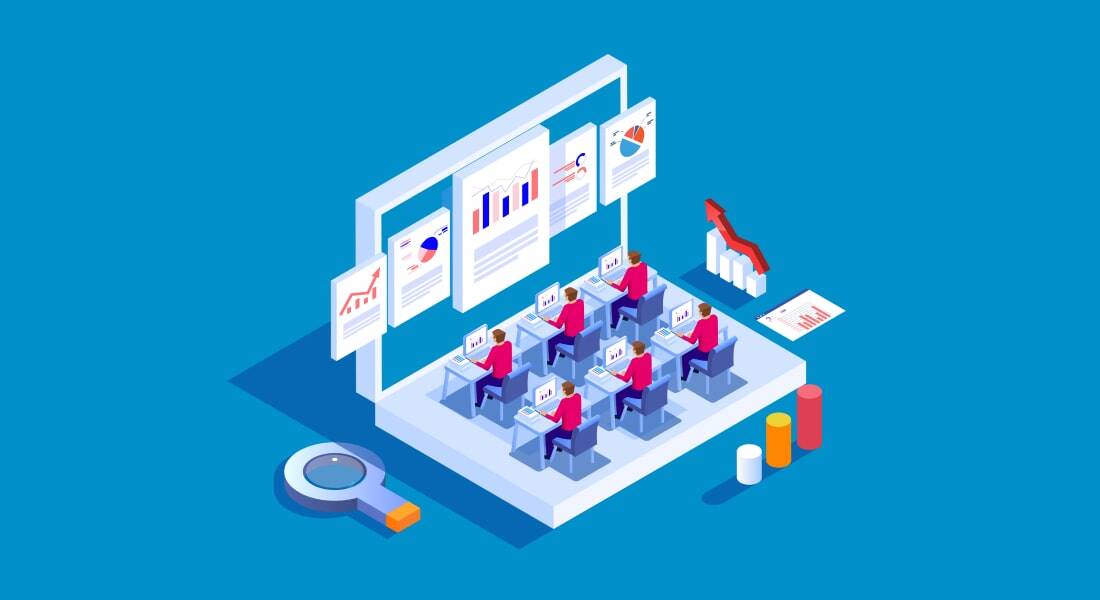Can Custom eLearning Combined With Classroom Instruction Improvise Training?

In today's fast-paced corporate world, continuous learning and development are no longer just nice-to-haves, but rather essential components for success. The traditional model of one-size-fits-all training is gradually giving way to a more personalized approach that caters to the unique needs and preferences of individual learners. This is where custom eLearning experiences come into play. Unlike generic off-the-shelf courses, custom eLearning takes into account the organization's culture, values, and goals, as well as the learners' existing knowledge, skills, and learning styles. This blog discusses how the combination would work with classroom instruction.
Wondering if Combining Custom eLearning with Classroom Instruction is Beneficial?
Here are a few advantages of custom eLearning -
- Targeted learning
- Flexibility and convenience
- Cost-effectiveness
- Scalability
- Data-driven insights
Benefits of Custom eLearning
Custom eLearning refers to the development of online training programs tailored to the specific requirements of an organization or a group of learners. Here are a few of its notable benefits -
- Targeted Learning:Custom eLearning allows organizations to focus on the precise knowledge and skills that employees need to perform their jobs effectively. This leads to higher engagement and faster skill acquisition.
→ Download Infographic Now: How Custom eLearning Offers Personalized Learning Experiences
- Flexibility and Convenience: eLearning provides learners with the flexibility to access training materials anytime and anywhere, fitting learning seamlessly into their busy schedules.
- Cost-Effectiveness: While the initial investment in custom eLearning development might seem high, it can significantly reduce long-term training costs by eliminating the need for travel, venue rentals, and instructor fees.
- Scalability: Custom eLearning modules can be easily updated and distributed to a large number of learners with the help of modern LMS platforms, making it a scalable solution for organizations of all sizes. Here are a few of the LMS platforms to begin with -

- Data-Driven Insights: eLearning platforms can track learner progress and performance, providing valuable data to assess training effectiveness and identify areas for improvement.
The Power of Combining eLearning with Classroom Instruction
While custom eLearning offers numerous advantages, it may not be the perfect solution for every learning scenario. Certain topics or skills might require a more hands-on, interactive approach that traditional classroom instruction can provide. The ideal approach, therefore, lies in combining the best of both worlds – eLearning and classroom training.
This blended learning model leverages the strengths of each delivery method to create a customized learning experience that caters to the diverse needs of learners. eLearning modules can be used to deliver foundational knowledge, while classroom sessions can focus on practical application, discussion, and collaboration. Here’s a short video to learn more about blended learning -
Use Cases for Combining eLearning and Classroom Instruction
1. Product Training
Custom eLearning modules can effectively introduce employees to new products or services, explaining their features, benefits, and target audience. These product training modules can include interactive simulations, quizzes, and assessments to reinforce learning. Subsequent classroom sessions can then provide opportunities for hands-on practice, role-playing scenarios, and Q&A sessions with product experts. This combination ensures that employees have a comprehensive understanding of the product and are equipped to effectively communicate its value to customers.
2. Onboarding Training
eLearning can streamline the onboarding process by providing new hires with essential information about the company's history, culture, values, and policies. This self-paced format allows new employees to learn at their own speed and review materials as needed. Classroom sessions can then focus on building relationships with colleagues, clarifying doubts, and engaging in team-building activities. This blended approach fosters a sense of belonging and accelerates the integration of new employees into the organization.
3. Compliance Training
Compliance training is often mandatory for employees across various industries. eLearning modules can effectively deliver information about legal requirements, industry regulations, and company policies. These modules can incorporate real-world scenarios and interactive exercises to ensure learners understand the practical implications of compliance. Classroom sessions can then be used to discuss complex or sensitive issues, address specific concerns, and foster a culture of ethical behavior. This combination helps organizations meet regulatory requirements while ensuring that employees understand the importance of compliance.

Wrapping Up!
In conclusion, custom eLearning experiences combined with classroom instruction offer a powerful approach to corporate training delivery. By leveraging the strengths of both eLearning and classroom training, organizations can create personalized learning experiences that cater to the diverse needs of their employees. This blended approach not only enhances learning outcomes but also ensures that employees are equipped with the knowledge and skills they need to succeed in their roles. Here’s a free bonus infographic for you to keep, as it mentions in detail how custom eLearning can be beneficial for personalizing learning.


![Custom eLearning — How it Can Offer Personalized Learning Experiences [Infographic]](https://no-cache.hubspot.com/cta/default/59327/1353ae98-9928-439e-848a-c80f513a72dc.png)

![Customized Online Compliance Training Courses Benefits and Best Practices [Infographic]](https://blog.commlabindia.com/hubfs/Imported_Blog_Media/customized-online-compliance-courses-infographic-01-1.jpg)
![Best Practices to Convert Training Presentations into Engaging Online Courses [Infographic]](https://blog.commlabindia.com/hubfs/Imported_Blog_Media/articulate-studio-for-converting-ppt-to-online-courses.jpg)